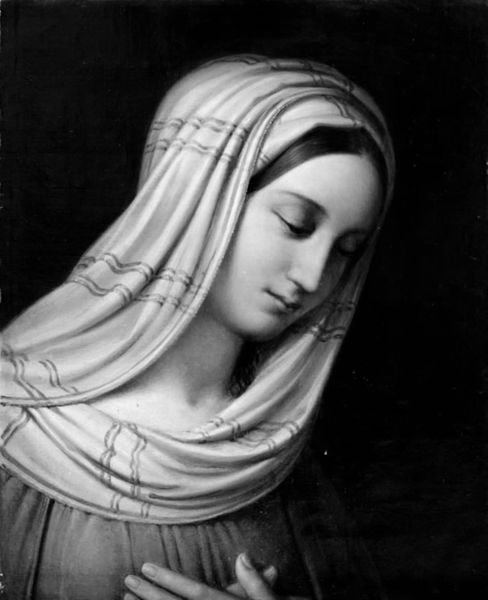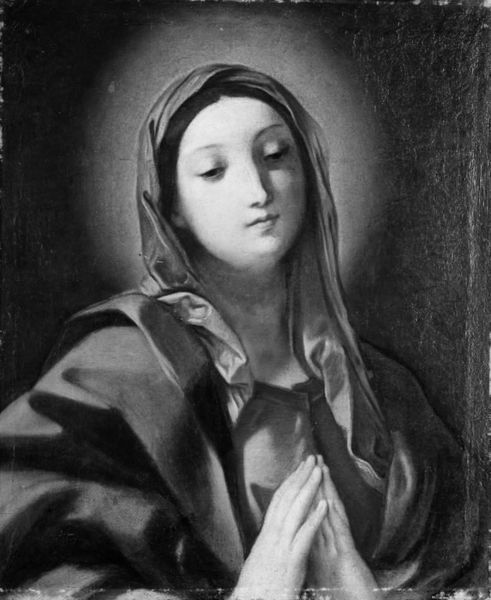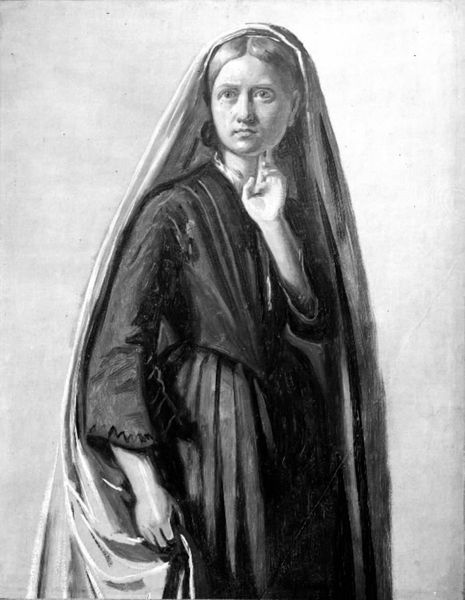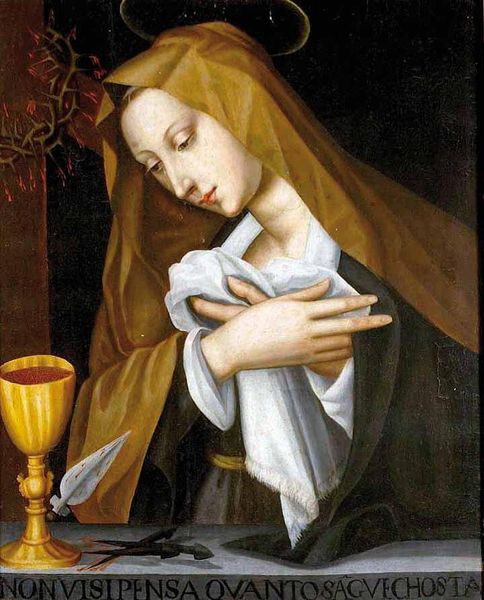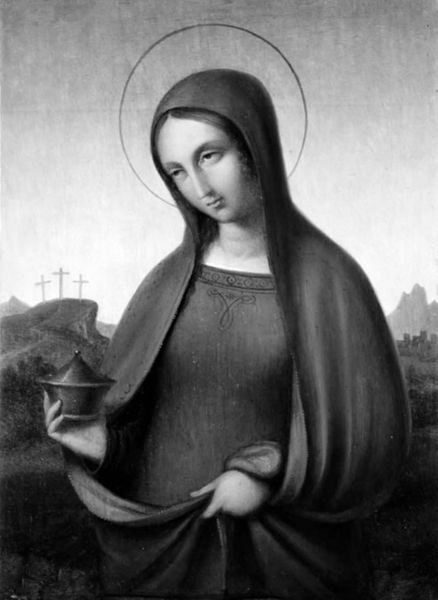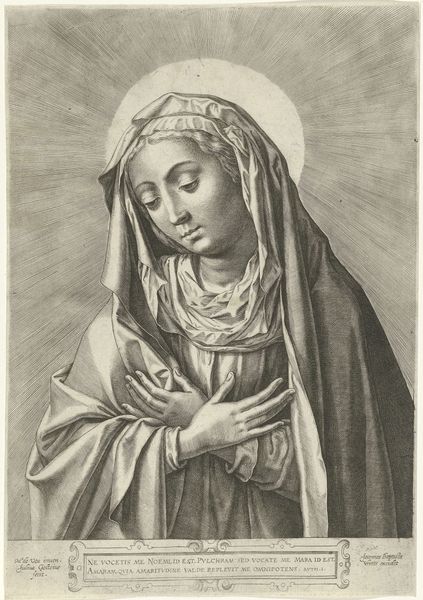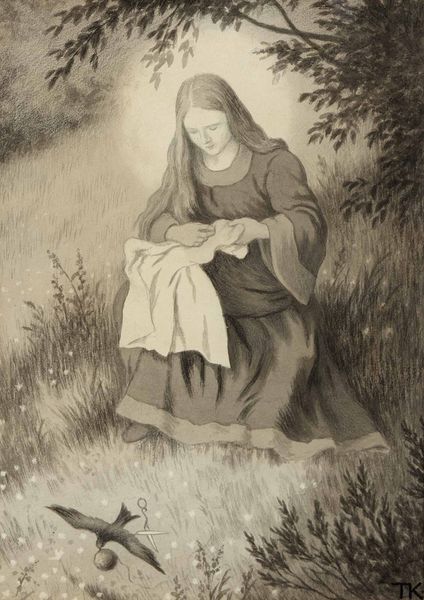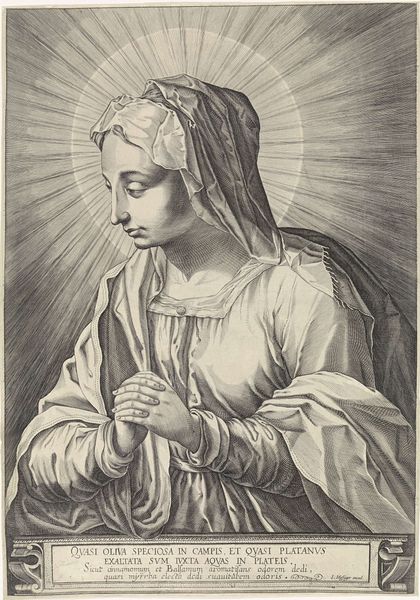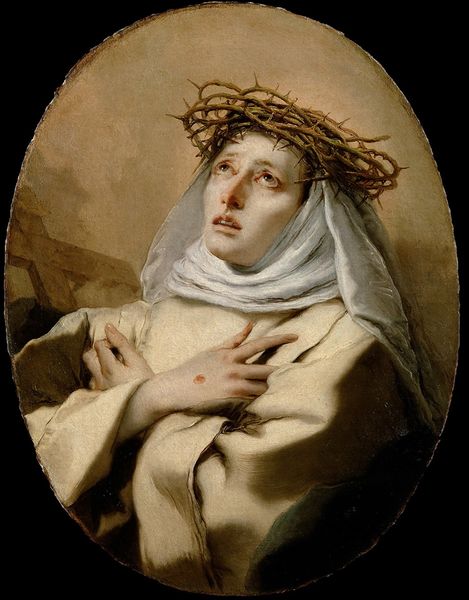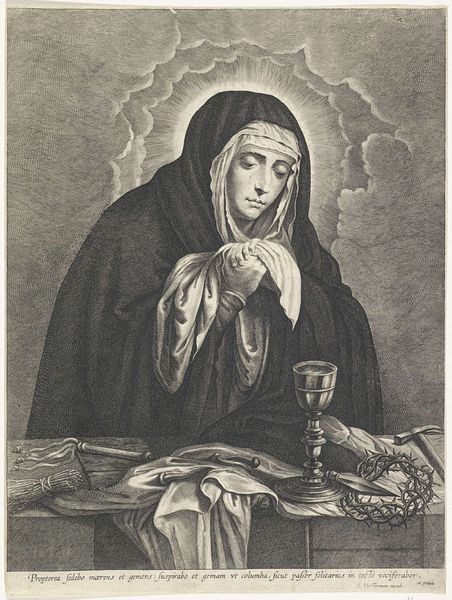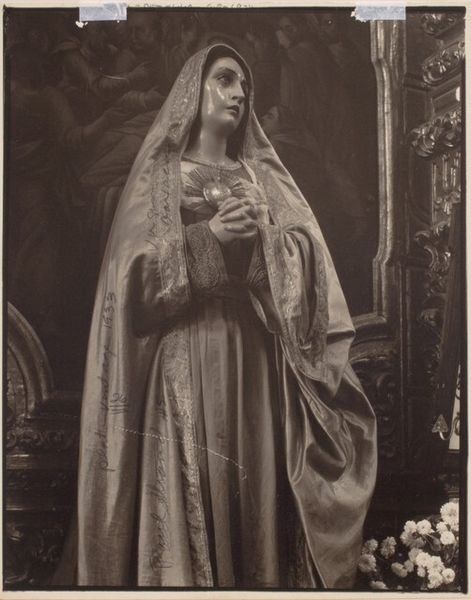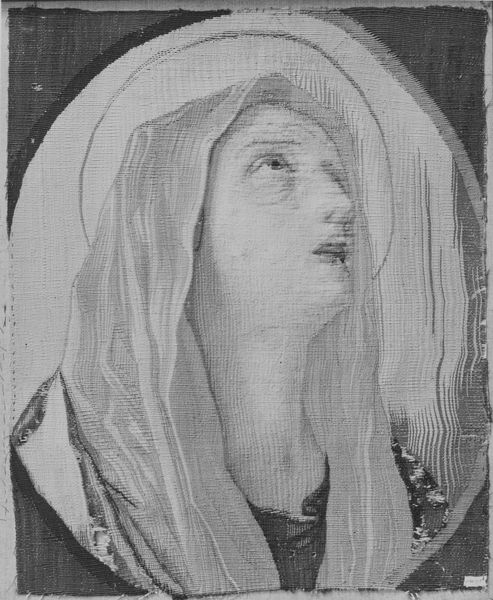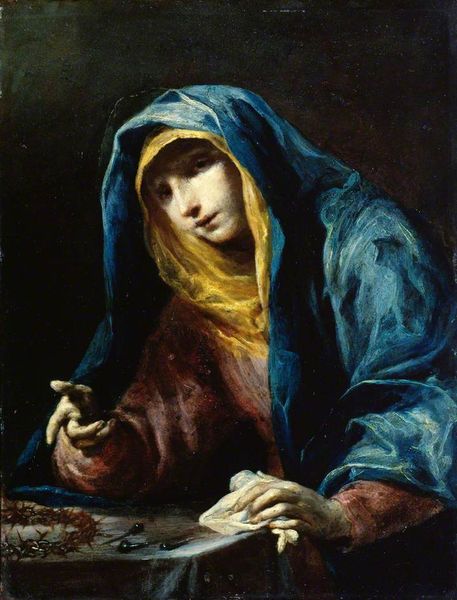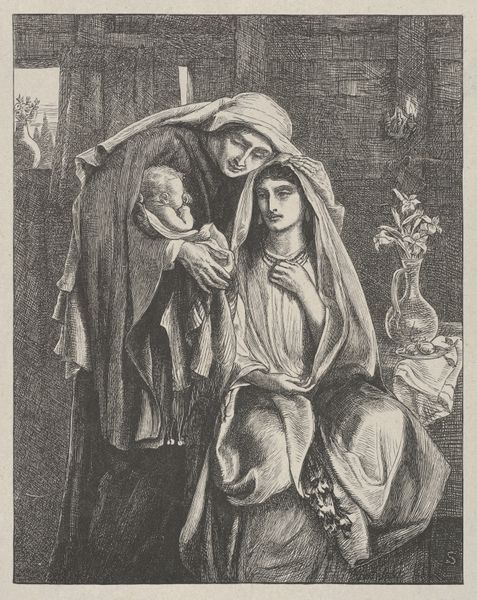
painting, canvas
#
portrait
#
baroque
#
portrait image
#
painting
#
canvas
#
black and white
#
monochrome
#
realism
#
monochrome
Dimensions: 76.5 cm (height) x 62.5 cm (width) (Netto)
Curator: Let's turn our attention to "En bondepige fra bjergene nær Foligno" by Andreas Møller, painted in 1733. It resides here at the SMK, Statens Museum for Kunst. Editor: It's stark, isn't it? Even in monochrome, the image resonates with an earthy, almost tactile quality. The texture of the young woman's veil practically invites you to touch it. Curator: The painting presents a portrait of a peasant girl, likely from the mountains near Foligno, Italy. What interests me is how Møller portrays her. Her identity as a 'peasant girl' isn't just descriptive; it places her within a socio-economic structure. This prompts considerations around the objectification and idealization of rural labor in art. Editor: Right, and I immediately wonder about the materials themselves—what kind of canvas, the source and mixing of the paints to achieve such nuances in grey tones. What were the working conditions for Møller? Was this commissioned, and what constraints did that place on his production? Curator: It’s insightful to think of the materiality of labor. We should also consider how Møller, as an artist of his time, would have likely viewed and engaged with his subject. Gender roles certainly play a significant role here too. She is captured not in action, but in quiet contemplation, embodying a kind of passive femininity common in that era. Editor: I’m also struck by the basket she’s holding. Is it a container for fruit, wool or raw materials ready for sale? It serves both as a prop that informs her status and a very tangible link to the landscape. It reminds us about distribution and supply lines across vast geographies. Curator: Exactly, and by bringing all this together, Møller's painting creates a platform for questions related to social status, material conditions, and even colonial networks in art. Editor: Thinking about the process, the labour inherent in obtaining those materials to generate the work, and the labour represented in its subject offers another way to approach historical narrative. Curator: Absolutely. Examining it in this light allows us to view beyond mere aesthetics and toward social awareness and a feminist position within history. Editor: Indeed. Looking at it from these standpoints has reshaped how I read Møller's art, prompting thought about the production line in its broadest context.
Comments
No comments
Be the first to comment and join the conversation on the ultimate creative platform.
